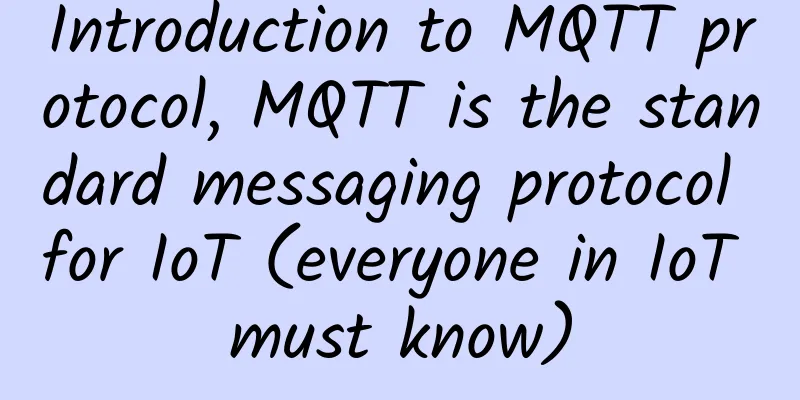Millimeter wave and Sub-6GHz complement each other and empower various industries

|
At present, promoting the development of 5G millimeter wave has become a consensus among countries. The United States, South Korea, Japan, Europe and other countries and regions have taken the lead in commercializing 5G millimeter wave. China is also actively promoting the development of 5G millimeter wave and gradually creating external conditions for 5G millimeter wave to be integrated into thousands of industries. In the process of empowering thousands of industries, millimeter waves are more suitable for use in combination with the Sub-6GHz frequency band. The Sub-6GHz frequency band provides coverage, and 5G millimeter waves provide capacity. The complementary advantages can further empower thousands of industries.
160 operators around the world have invested in millimeter wave technologyAs 5G networks and services continue to expand in the global market, 5G millimeter wave will surely become a powerful tool for telecom operators to expand business applications and network deployment models due to its technical and economic characteristics. According to GSA data, as of mid-August 2021, more than 160 telecom operators around the world have invested in 5G millimeter wave technology, and there are 84 terminal devices that support 5G millimeter wave. These figures have increased significantly compared to a year ago. In August 2020, a year ago, only more than 30 terminal devices supported 5G millimeter wave technology. Industry analysts also give positive predictions for millimeter wave terminals. GSMA predicts that more than 100 smartphones released in 2021 will support millimeter wave technology, nearly 10 times more than last year, and more than 50 FWA CPEs devices will support millimeter wave. Strategy Analytics predicts that the share of 5G millimeter wave smartphones in global smartphone sales will increase from 2% in 2020 to 14.8% in 2026. The millimeter wave standard is still evolving. The completed 5G second version R16 projects include integrated access and backhaul (IAB), enhanced beam management, power saving features, dual connection optimization, positioning, etc. In R17 and future versions, it is possible to optimize IAB to support distributed deployment, optimize network coverage and beam management, expand spectrum support, new use cases beyond eMBB, and enhance positioning. Millimeter wave spectrum allocation is also a focus of global attention. Millimeter wave can be used as an effective solution to meet the needs of enhanced mobile data services, while using other spectrum will bring greater challenges or higher costs. In 2019, the ITU World Radiocommunication Conference (WRC-19) identified more frequency bands for 5G, including 24.25~27.5GHz, 37~43.5GHz, 45.5~47GHz, 47.2~48.2GHz and 66~71GHz. Millimeter waves are mainly used in three scenariosCompared with 4G, 5G is not only faster. Liu Hong, technical general manager of GSMA Greater China, said that 5G millimeter wave has six major technical advantages, including rich frequency resources, easy to combine with beamforming technology, extremely low latency, support for high-density cell deployment, high-precision positioning, and high equipment integration. According to the coverage area, the "5G Millimeter Wave Technology White Paper" released by GSMA roughly divides the application of 5G millimeter wave into three aspects: indoor coverage, outdoor coverage, and fixed wireless broadband access. Outdoor coverage has always been a priority for operators. Typical outdoor scenarios include UMi and UMa. Typical UMi scenarios include streets in densely populated urban areas, alpine ski tracks, and relatively open squares; UMa scenarios are more typical macro base station deployment scenarios, but because the inter-station spacing is generally large, if operators still want to provide continuous coverage in outdoor millimeter wave application scenarios, they need to further evaluate the inter-station spacing. Indoor coverage will be the key coverage area of 5G millimeter wave. According to statistics, 80% of data exchange in 4G mobile networks occurs indoors. Based on this, it is estimated that users' data exchange in 5G millimeter wave will be no less than 85%. Indoor coverage is divided into three areas: office, commercial venues (shopping malls, railway stations, airports), and large venues. Typical network requirements in office scenarios include multi-party telephone/video conferencing, data downloads, and cloud storage, which have high requirements for data transmission stability and latency; for commercial venues, the indoor area is large and relatively open, with few obstacles, high user density, and large traffic demand. Therefore, the requirement for millimeter wave is to provide high speed while meeting indoor high throughput requirements; large venues are mainly high-capacity and high-speed services for uplink and downlink, mainly video services. In terms of fixed wireless broadband access, millimeter wave coverage is currently a relatively mature and low-cost method. The millimeter wave system can provide up to 800MHz bandwidth and 10Gbit/s system peak rate, making millimeter wave a wireless backhaul link. For example, millimeter wave can be used for the backhaul of LTE/5G low-frequency base stations, or to provide broadband services to homes or businesses through millimeter wave CPE. In addition, 5G millimeter waves have many application scenarios in the industrial field and can be widely used in large bandwidth and low latency scenarios. For example, when remotely controlling a robotic arm, any action command needs to get the fastest feedback, and this is when millimeter wave technology is needed. Industrial quality inspection achieved through high-definition cameras and artificial intelligence can also be achieved through millimeter wave technology to provide high-speed connections between cameras and edge clouds. In addition, millimeter waves can also provide higher-precision positioning, and through optimization, it can achieve a positioning accuracy of about one meter or even centimeters. my country's millimeter wave industry is gradually maturing5G millimeter wave has the characteristics of rich bandwidth resources, short time slots, extremely short wavelengths, and easy combination with beamforming technology, which can achieve dense deployment and high-precision positioning, but it also has disadvantages such as large signal attenuation, easy obstruction, short transmission distance, and high hardware requirements. Therefore, at present, my country's deployment of 5G millimeter wave systems mainly relies on 4G and 5G medium-frequency large networks, as a capacity supplement and capability improvement of the large network, to provide eMBB and uRLLC services. In terms of spectrum allocation, my country has already carried out pilot work. In July 2017, the Ministry of Industry and Information Technology approved the use of the 24.75-27.5 GHz and 37-42.5 GHz frequency bands for my country's 5G technology research and development millimeter wave test frequency bands. The test sites are the MTNet laboratory of the China Academy of Information and Communications Technology and the 5G technology test field in Huairou and Shunyi, Beijing. On July 13, 2021, the "5G Application "Sailing" Action Plan (2021-2023)" jointly issued by ten departments proposed to release the 5G millimeter wave frequency plan in a timely manner and explore the implementation of a bidding system for 5G millimeter wave frequency use licenses. With policy support, major equipment manufacturers in my country can provide support for key millimeter wave functions. In terms of key functions such as 24.75~27.5GH frequency band, NSA/SA networking, 800MHz bandwidth uplink and downlink simultaneous operation, MU-MIMO capability, DSUUU frame structure, etc., domestic manufacturers' R&D progress is faster than that of foreign manufacturers. Terminals are also gradually supporting 5G millimeter waves. Huawei, ZTE, and OPPO already have CPE terminals that support the 24.25~27.5GHz frequency band that can be used for network testing. Vivo, OPPO, etc. are also promoting the development of mobile phone terminals to ensure that they have product capabilities after the experimental frequency license. It is understood that on August 27 this year, ZTE and Qualcomm successfully tested the millimeter wave AAU network infrastructure. On September 3, Huawei and industry partners completed the world's first laboratory test of 5G high and low frequency CA (carrier aggregation) technology, achieving a single-user download rate of 5.2Gbit/s. While my country's leading companies continue to make progress, the three major operators are also conducting related experiments and building pilot networks to prepare for the demonstration of 5G millimeter wave at the 2022 Beijing Winter Olympics. Although the development momentum is good, there are still many problems in the development of my country's millimeter wave industry. For example, my country's millimeter wave industry chain is relatively weak compared with foreign countries; the localization degree of core technologies and core components of millimeter wave equipment is low, and the specifications and specific indicators need to be unified; some functions such as beam management and mobility need to be further improved; there is a certain gap between system capabilities and demand, and the advantages over Sub-6GHz are not obvious. But overall, the global millimeter wave industry chain has commercial capabilities, equipment functions and performance still need to be improved, and terminal capabilities need to be improved. Specifically, from the current theoretical analysis of millimeter wave equipment and laboratory end-to-network docking tests, the millimeter wave single-user downlink peak is close to the theory, but the uplink peak is due to the small number of supported carriers, and the uplink single-user rate is somewhat different from the operator's needs; in terms of cell capacity, millimeter wave does not support multi-user MIMO space division multiplexing to a high degree, and equipment research and development and actual performance need to be further improved; from the perspective of industry development, my country needs to further focus on business areas, clarify millimeter wave application scenarios, and verify the business capabilities of millimeter waves from the perspective of converged networking, so as to give full play to the advantages of millimeter wave business capabilities and promote network deployment and industrial development. |
<<: A great tool for front-end engineers - Puppeteer
>>: IDC: Edge management services market expected to explode
Recommend
Xentain: $1.25/month-1GB/15GB SSD/1Gbps unlimited traffic/Fremont data center
New merchant, mainly with the discount code, the ...
[Black Friday] SaltyfishTech: 499 yuan/year-4 cores/4GB/50G SSD/1TB@150Mbps/Germany 9929 line
SaltyfishTech also released a special Black Frida...
DiyVM: 50 yuan/month - 2GB/50GB/10M/Hong Kong CN2/US CN2/Osaka, Japan optional
How about DiyVM? The Chinese host provider was es...
Alibaba final interview: How to use UDP to implement TCP?
[[355616]] This article comes from a real intervi...
What other issues do we need to address to grow our business?
Consumers in today's world are more "fic...
McKinsey: These ten trends are enough to subvert the existing IT infrastructure
When it comes to hardware and IT infrastructure, ...
5G mobile phones will be released on a large scale soon: 5G network traffic charging method is exposed!
China Unicom will carry out 5G pilot projects in ...
5G, where is the road ahead? Computer experts look ahead to the 5G era
[[348682]] Data released by the Ministry of Indus...
Digital China is moving towards a deeper and more practical digital economy.
"Vigorously develop the digital economy, imp...
Tencent Cloud Light 1C2G3M is only 253 yuan (or 83 yuan/year) for three years, shared by new and old users
Tencent Cloud's Double 11 event is still vali...
Interview with Tong Yongyue: Will CDN that advocates "standard size" have bigger moves in the future?
As the infrastructure of the Internet, CDN has be...
Talk: How to explain 3PC to your girlfriend?
After a pleasant hotpot meal, I went home leisure...
HostNamaste: $36/year-2GB/50GB/2TB/Los Angeles & Dallas & France & Canada
HostNamaste recently provided several special ann...
Weibu Online OneDNS helps the real estate industry with network security
If you are the only security manager of a real es...
Towards the next generation of Internet, SoundNet releases full-link acceleration FPA to increase QoS protection for the Internet
On August 19, Agora held an online product launch...









